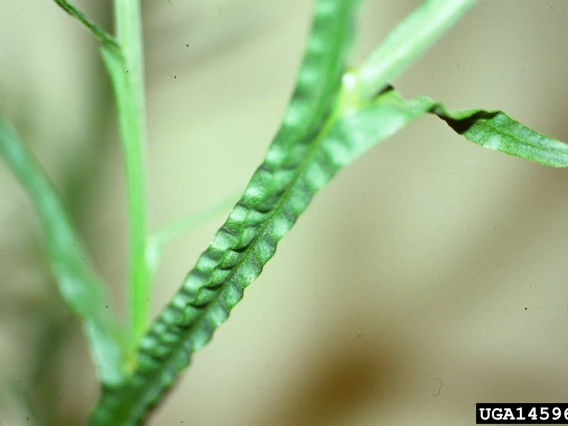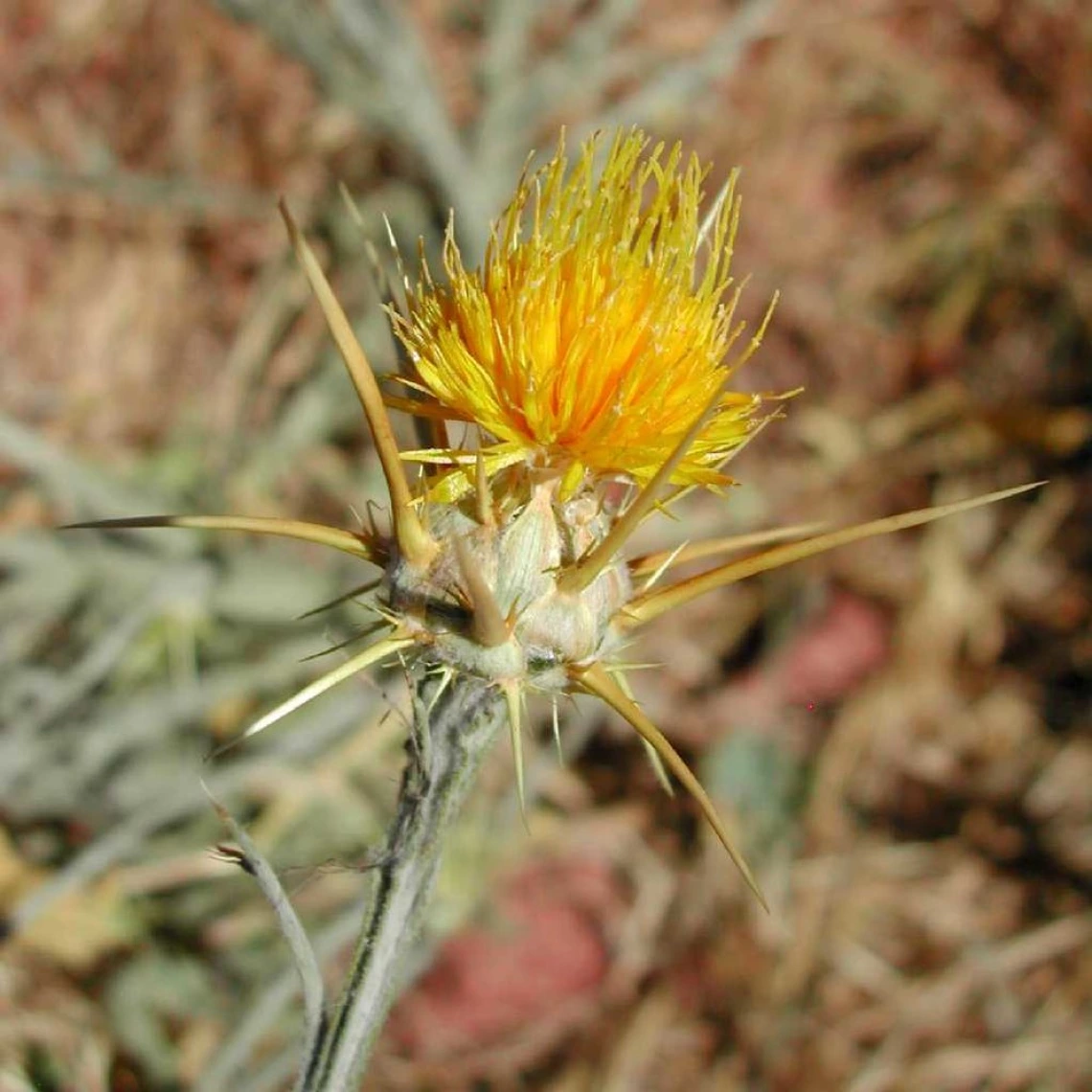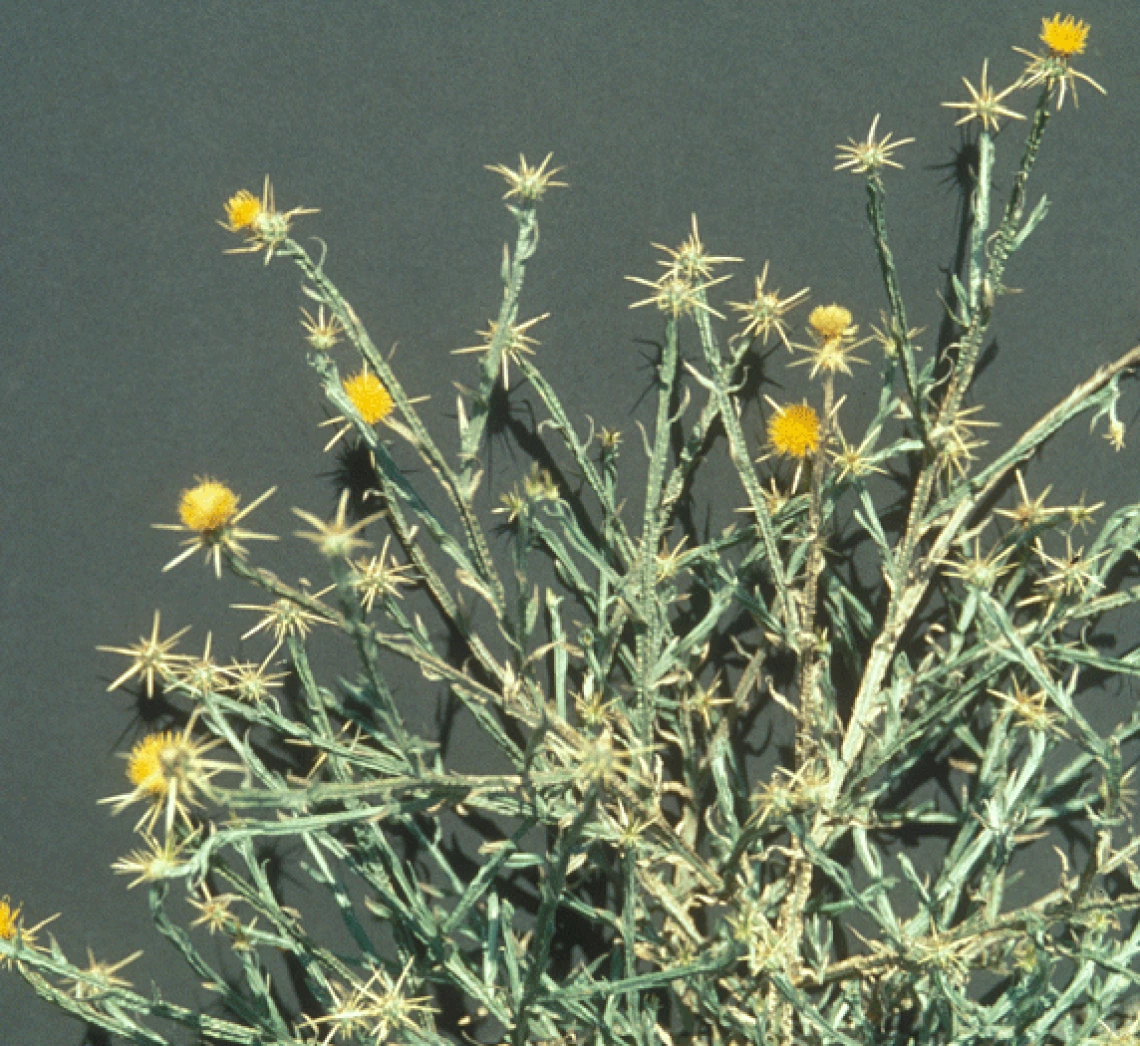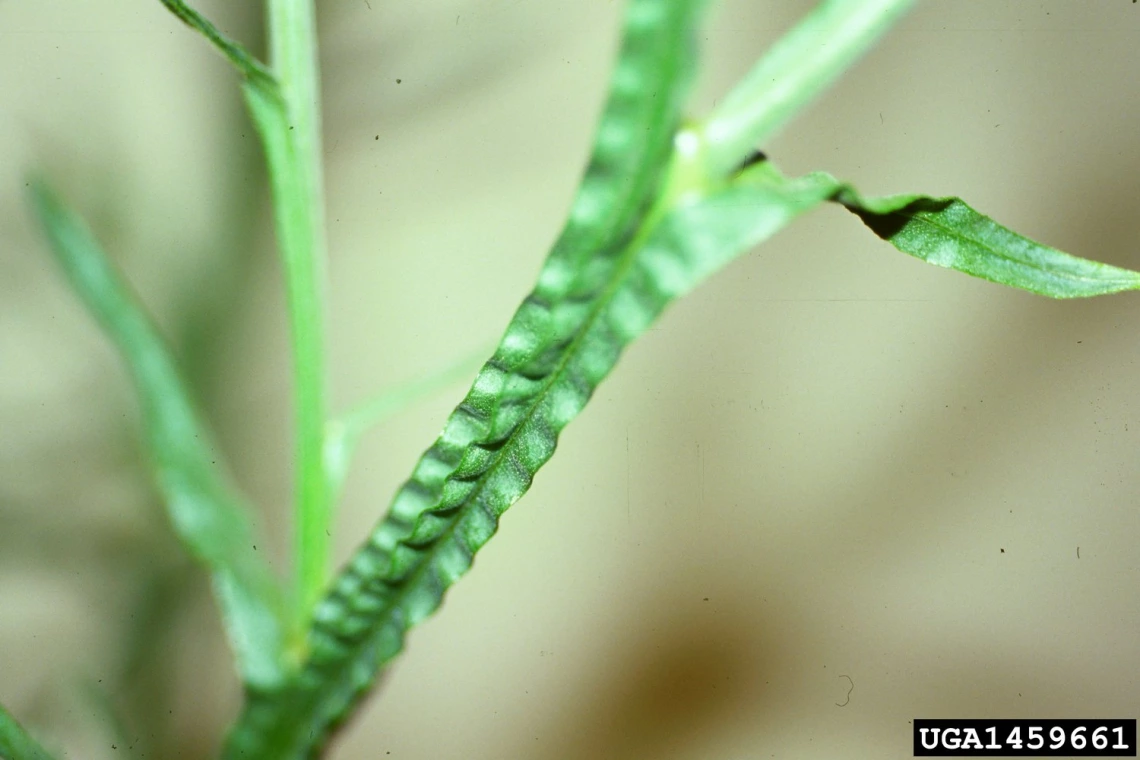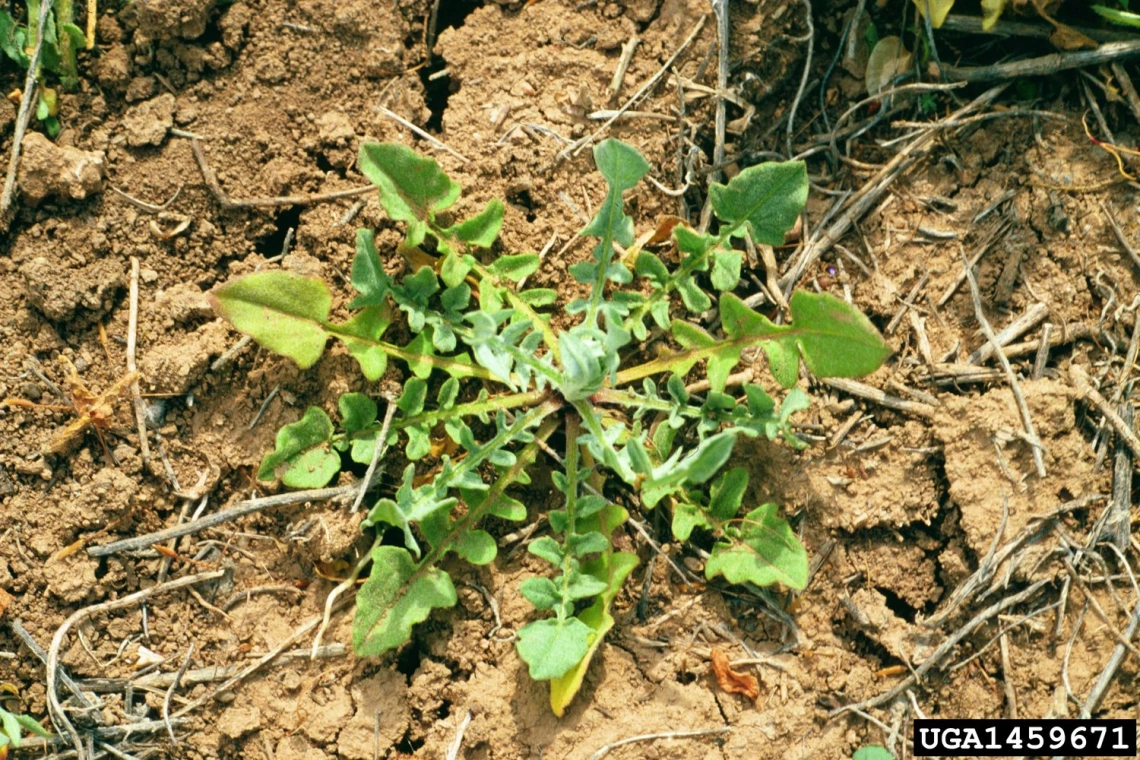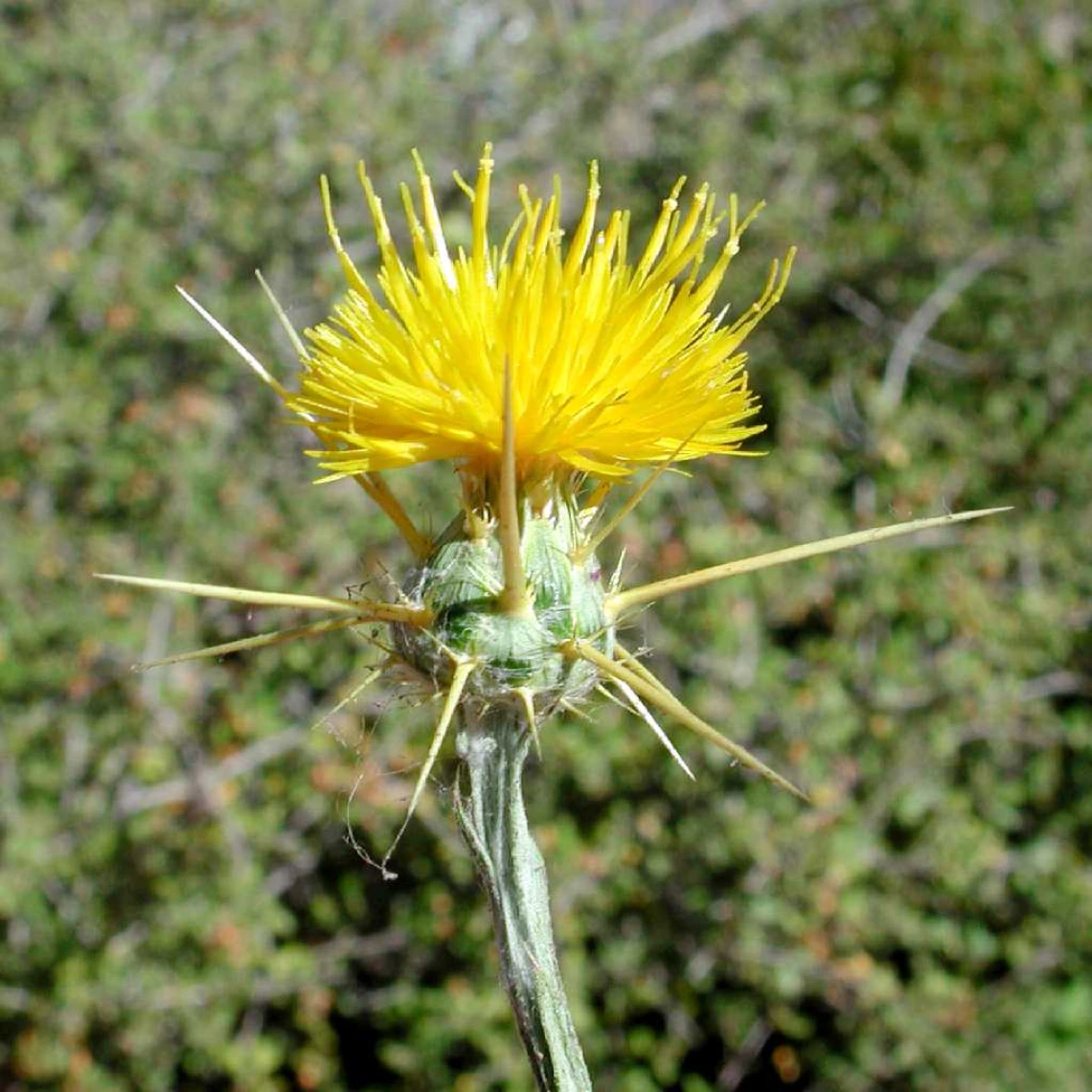Image
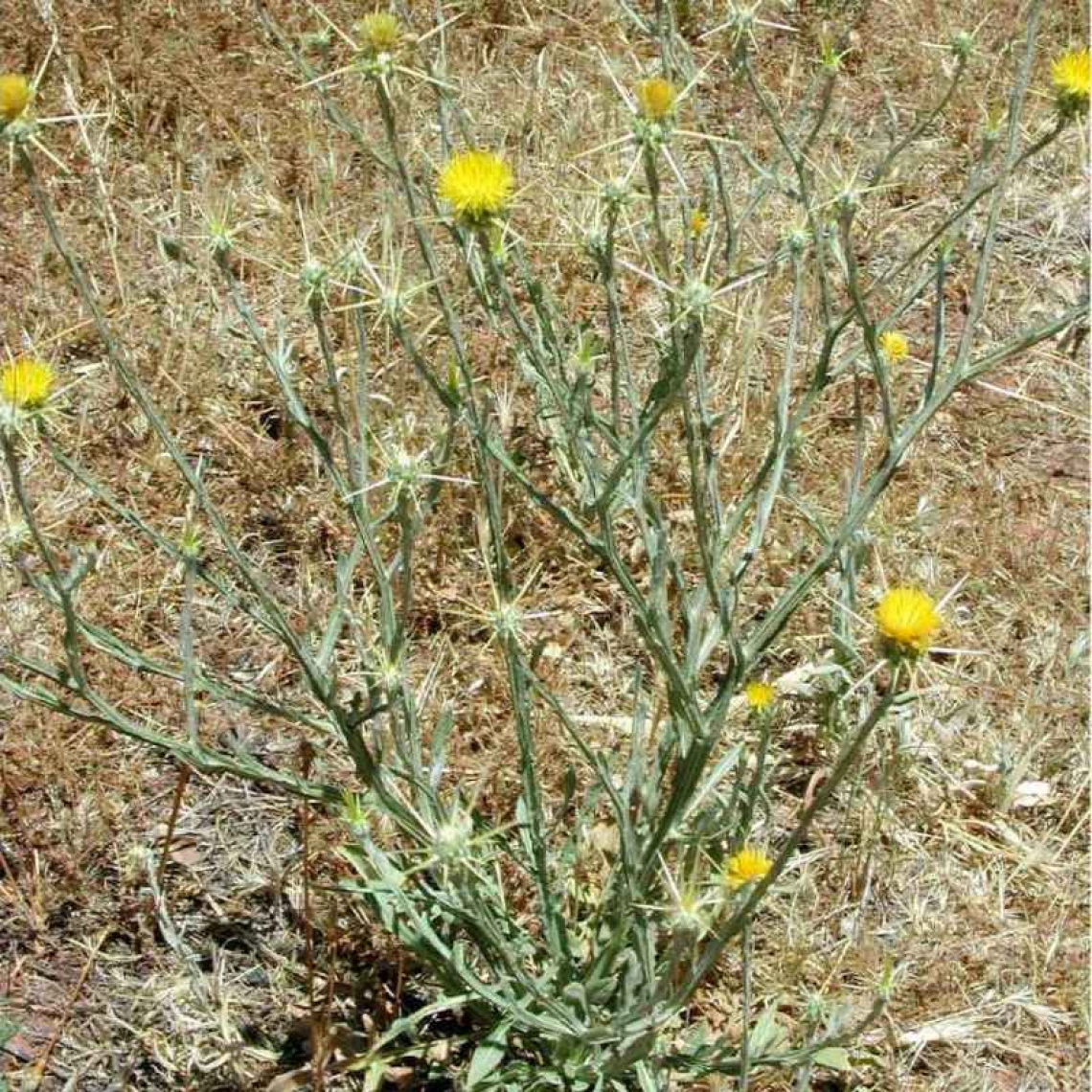
Yellow starthistle habit
Max Licher, swbiodiversity.org/seinet
Common Name(s)
Yellow starthistle
Starthistle
Scientific Name
Centaurea solstitialis
Family
Sunflower or Aster family (Asteraceae)
Reasons for concern
This plant can quickly convert native plant communities into a non-native monoculture. Its impenetrable stands are a threat to native plants, wildlife, recreation and agriculture. Animals, people, and vehicles easily spread the seeds. It can cause fatal chewing disease in horses.
Classification
Non-native. Categorized as a Class B noxious plant on the Arizona Noxious Weed list, meaning that it “may be a high priority pest for quarantine, control, or mitigation if a significant threat to a crop, commodity, or habitat is known to exist.”
Botanical description
Erect, branching, broadleaf herbaceous plant. Related to knapweeds, not really a thistle.
Leaves
Rosette resembles that of dandelions, but is much larger, with deeply lobed leaves up to 8 inches long. Stem leaves are linear or tapered, without lobes, covered with cottony hairs. Upper leaves are smaller and narrower. Leaves are gray-green to blue-green.
Stem(s)
Stem is 1 to 5 feet tall, gray-green to blue-green, with short, rigid branches, and cottony appearance. Stem may be simple or branched from the base. Stem skeleton is silver green. Extension of leaves runs down stem.
Flowers
Bright yellow flower heads, located singly on ends of branches that bloom July to September. Stiff, sharp, straw-colored thorns up to 1 inch long extend from modified leaves below flower head.
Seeds
Cottony-white seed heads appear in fall. Most are dispersed at maturity between November and February.
Roots
Taproot grows 3 feet deep.
Native to
Mediterranean region of Europe.
Where it grows
Disturbed areas, roadsides, rangelands, pastures, and fields from 3,000 to 7,000 feet elevation. Likes deep, well-drained soils and full sun. Thrives in summer drought. Found in Picture Canyon near Flagstaff.
Lifecycle
Winter annual
Reproduction
By seed
Weedy Characteristics
Yellow starthistle is very aggressive. A single plant can produce 150,000 seeds. Seeds remain viable in soil up to 10 years and can survive fires. Early seedling emergence ensures they will get enough precipitation. Most seeds do not move more than 2 feet from parent, resulting in dense stands. Large taproots allow plants to survive in dry conditions.
Control Strategies
Remove new seedlings. This is very effective, especially on new, smaller populations. Never let it go to seed. Always wear gloves when eradicating. Mowing is not effective as plants will continue to flower low to the ground. Hand-pulling and digging prior to seed production is effective for small populations. Plant natives, especially perennials to provide competition. Herbicides can be used on actively growing plants though timing is important. Contact your local county extension office for more information on chemical control.
References
- Yellow starthistle Noxious Weed Control Board, Washington State
- Yellow starthistle Plant Conservation Alliance’s Alien Plant Working Group
- Yellow starthistle University of California Agriculture and Natural Resources – IPM Weed Gallery



